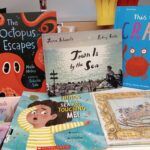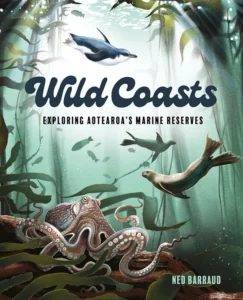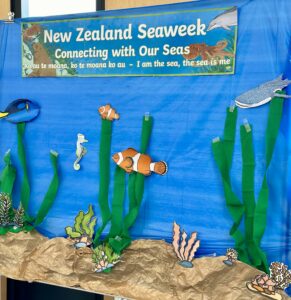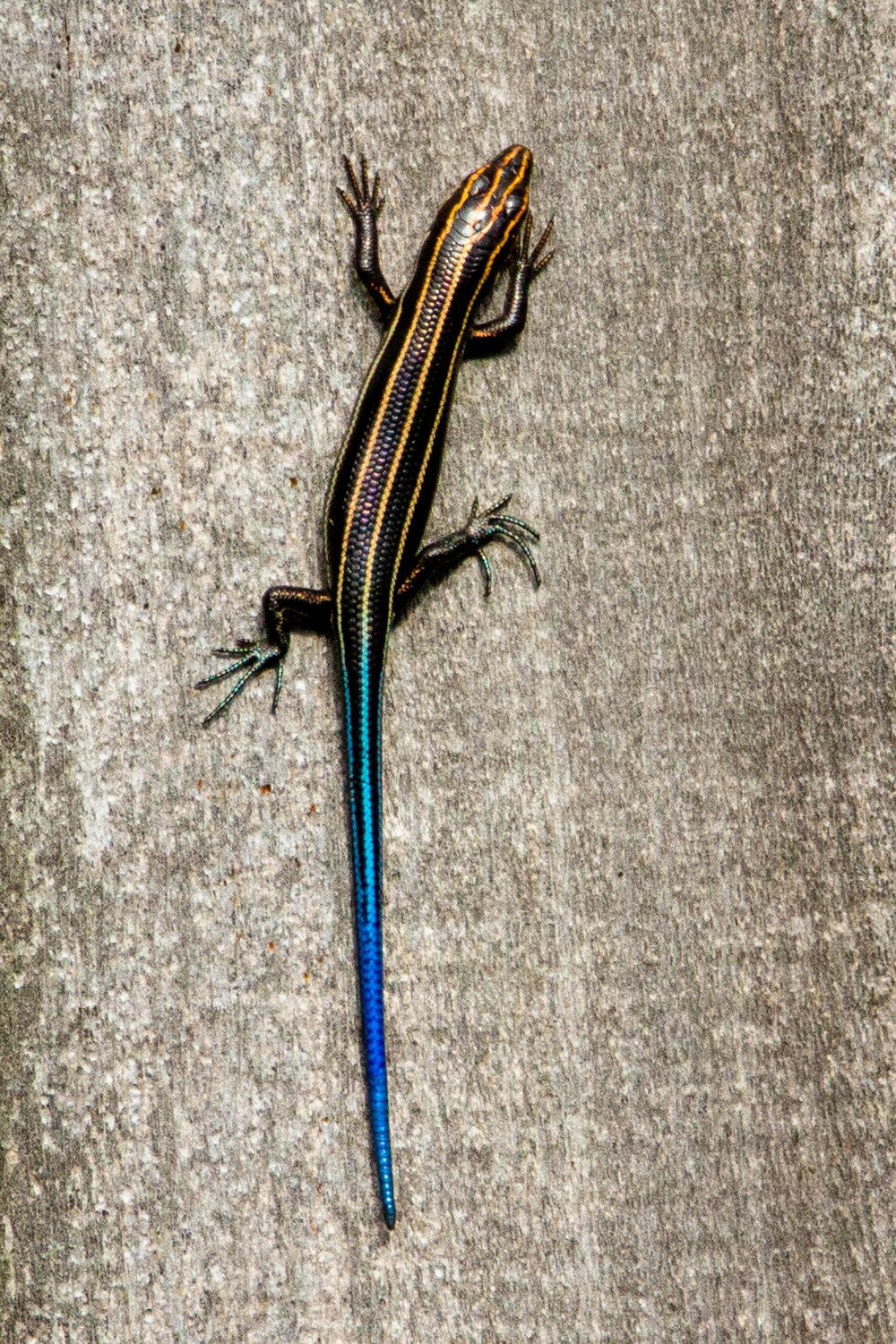Seaweek 2024 has just started! Seaweek is New Zealand’s national week for celebrating the sea, and this year it runs from the 2nd to the 10th of March.
Here in Aotearoa we are surrounded by the sea, so it’s no surprise that our moana is something many of us feel a strong connection to. Every year, Seaweek hopes to inspire us all to engage with nature, explore the ocean, and develop this sense of connection with our environment and the sea. Seaweek is an opportunity to get involved in a community beach clean-up, visit a marine education centre, or just learn more about the oceans around us and what live in them.
If you’re looking for Seaweek activities in Wellington, there are a few events you might be interested in this Saturday the 9th of March. You can celebrate Seaweek at Te Papa and drop in to design your own deep sea fish and go all the way underwater in a Virtual Reality Submarine, or you could visit the Victoria University Coastal Ecology Lab Open Day and explore their interactive touch tanks and learn all about marine biology.
 If you’d like a sea-themed literary experience, our own Te Awe Library is running a sea-themed Preschool Storytime on Wednesday the 6th of March. Come along and join our most piratical librarian for sea-themed stories, songs, and rhymes!
If you’d like a sea-themed literary experience, our own Te Awe Library is running a sea-themed Preschool Storytime on Wednesday the 6th of March. Come along and join our most piratical librarian for sea-themed stories, songs, and rhymes!
This year, Seaweek’s Ocean Champion Challenge has been refreshed to recognise the variety of actions being taken to protect the ocean and raise awareness. If you know someone who advocates for the ocean through their art, or who collects of contributes data related towards our marine environment, or who uses storytelling to contribute to ocean awareness, education, or conservation, they can be nominated as a Creator, Investigator, or Narrator! You can nominate a friend, or be nominated yourself!
Perhaps you’re keen to investigate Wellington’s beaches and sea life yourself? If you are, here are some books to get you started!
Rock pools : a guide for Kiwi kids / Barraud, Ned
“What New Zealand child is not delighted by a rockpool at low tide, with its colourful, fascinating array of creatures, some still, some flitting about? Rock Pools is a book designed to enhance this experience, with each page presenting an intriguing glimpse into the creatures that inhabit these low-tide wonderlands. All of the common creatures from New Zealand seashore, including crabs, sea anemones, starfish, barnacles and shrimps, and many more, feature in this fantastic book, which cannot help but delight and encourage children to interact with the natural world”–Publisher’s website.” (Catalogue)
 Wild Coasts : exploring Aotearoa’s marine reserves / Barraud, Ned
Wild Coasts : exploring Aotearoa’s marine reserves / Barraud, Ned
“Aotearoa is renowned for its wild coasts, but after decades of overfishing, many of these marine ecosystems are under serious threat. A crucial response to this has been the creation of 44 marine reserves around our shores, and this book explores six of the most spectacular of these: boat Island, north of Auckland, the Poor Knights Islands, Taputeranga on the south coast of Wellington, Hikurangi at Kaikoura, Piopiotahi (Milford Sound) in Fiordland, and Ulva Island at Stewart Island/Rakiura. Full of fascinating information and wonderful illustrations of the amazing sea life found in the marine reserves, Wild boasts is an inspiring tribute to these safe zones. It will be treasured by all young people who are interested in our marine environment.” (Catalogue)
At the beach : explore & discover the New Zealand seashore / Candler, Gillian
“At the Beach is a delightful introduction to the natural history of the New Zealand seashore. The stage is set with beautiful, factually correct illustrations (including detailed cross-sections) of three familiar habitats – the sandy beach, rockpools and mudflats. Many of the plants and animals that play a part in these rich ecosystems are shown in situ, and readers are directed from there to pages dedicated to detailed coverage of: crabs; sea stars, kina and sea anemones; shellfish; seaweeds, sponges and sandhoppers; fish, jellyfish & shrimps; birds. Aimed at children 5-8 years old, but with appeal for anyone curious about New Zealand’s natural environment, At the Beach is a must for the home, bach, classroom and library. Comes with a removable, waterproof quick-reference guide to common seashore animals.” (Catalogue)
Under the ocean : explore & discover the seas around New Zealand / Candler, Gillian
“Explore the vast ocean, underwater reefs, and the depths of the sea floor and discover some of the creatures that live in the seas around New Zealand… This beautifully illustrated and highly informative book is aimed at children from pre-schoolers up and anyone curious about our ocean and the amazing creatures that live there.”–Back cover.” (Catalogue)
The observologist / Clarkson, Giselle
A playful field guide for natural scientists and curious observers of the world right under our noses.
An observologist is someone who makes small scientific expeditions every day, who notices the interesting details in the world around them, and that there are fascinating things to be found in even the most ordinary places.
Above and below : sea and shore / Evans, Harriet
“What wonders wait beneath the waves? Dive in and find out with this beautiful split-page book that celebrates ocean habitats from the sandy shallows to the darkest depths. Turn the page to discover the incredible creatures and plants that lie below the ocean blue. With magnificent mangrove forests, colourful coral reefs and exciting estuaries, there are so many watery worlds to explore.”–Back cover.” (Catalogue)
I wonder why the sea is salty and other questions about the oceans / Ganeri, Anita
“Encounter deep-sea volcanoes, electric fish, fierce pirates, and much more! With over thirty bite-sized questions and answers and hundreds of fun and colorful illustrations, this is the perfect guide to the underwater world.”– Page 4 of cover.” (Catalogue)
Ultrawild : an audacious plan to rewild every city on Earth / Mushin, Steve
“Join maverick inventor Steve Mushin as he tackles climate change with an avalanche of mind-bending, scientifically plausible inventions to rewild cities and save the planet. Jump into his brain as he designs habitat-printing robot birds and water-filtering sewer submarines, calculates how far compost cannons can blast seed bombs (over a kilometre), brainstorms biomaterials with scientists and engineers, studies ecosystems, and develops a deadly serious plan for future cities. A tour de force of extreme problem-solving for anyone who loves big ideas.” (Catalogue)
Also available as an ebook.Hauraki broo / Slade-Robinson, Nikki
“Hauraki Broo, a young Bryde’s Whale, is searching for food but it’s getting harder and harder to find. From award-winning children’s author and illustrator Nikki Slade Robinson comes a beautiful and inspiring tale that addresses the challenges faced by marine life in the Hauraki Gulf, skillfully reminding us of the importance of the conservation of our whole marine environment”– Publisher description.” (Catalogue)
Also available in te reo Māori.
Our blue planet / Stewart-Sharpe, Leisa
“With all its variety, expanse and wonder, discover how much there is to love about Our Blue Planet. Our oceans are home to the greatest diversity of life on Earth and cover 71 percent of the planet. With so much to discover, this book introduces creatures beyond imagination.” — Provided by publisher.” (Catalogue)

 Many of the links in this blog go to the
Many of the links in this blog go to the 
